- Home
- Orhan Pamuk
The Museum of Innocence Page 64
The Museum of Innocence Read online
Page 64
In the early hours of April 12, 2007—Füsun’s fiftieth birthday—Kemal Basmacı, the hero of our novel and the founder of our museum, was asleep in a large room overlooking the Via Manzoni in the Grand Hotel et de Milan, the establishment in which he stayed every time he visited that city, when he suffered a heart attack and died, age sixty-two. Kemal Bey would take every opportunity to go to Milan, to “experience” (as he put it) the Bagatti Valsecchi Museum, which he esteemed “one of the five most important museums in my life!” (By the time of his death he had visited 5,723 museums.) “Museums are (1) not to be strolled around in but to be experienced, (2) made up of collections expressive of the soul of that ‘experience,’ (3) not in fact museums but merely galleries when emptied of their collections.” These are the last thoughts of his that I recorded. What most enchanted Kemal Bey about this house (renovated by two brothers in the nineteenth century to replicate a sixteenth-century Renaissance palazzo, and then converted to a museum in the twentieth century) was that its wondrous, historic collection comprised nothing but the ordinary everyday appurtenances of the brothers’ lives (the old beds, lamps, Renaissance mirrors, pots and pans).
Most of the people whose names I have listed in the index attended his funeral in Teşvikiye Mosque. Kemal’s mother, Vecihe, observing from the balcony as was her wont, was wearing a headscarf. We who stood tearfully in the courtyard could hear her crying as she bade farewell to her son.
Many of Kemal Bey’s relatives and close associates had refused to see me while he was alive, but in the first few months after his funeral they began to seek me out, one after the other, an orderly progression that, though strange, had its logic. The reluctance to approach me I attribute to the false but widely held impression that my books set in Nişantaşı denigrated everyone mercilessly. Sadly, there had been so much gossip, and so many accusations, that it was generally believed I had misrepresented not just my mother, my older brother, my uncle, and the rest of my family, but many other Nişantaşı notables as well, including the celebrated Cevdet Bey, his sons, and his family; my poet friend Ka; and Celâl Salik, the famous assassinated columnist, whom I had so admired; the well-known shopkeeper Alaaddin; as well as high-ranking state dignitaries, religious leaders, and military commanders. Zaim and Sibel were fearful of me without ever having read my books. Zaim was much richer than he’d been as a young man. Meltem soda had fizzled out, but the firm itself was going strong. They entertained me very graciously in their magnificent house in the Bebek hills overlooking the Bosphorus, honored, they said, to receive the one who had undertaken to write Kemal’s life story (those closer to Füsun would call it Füsun’s story). But I was not to make my story one-sided: I was to listen to them as well.
First of all, they wanted to tell me about a huge coincidence: Half a day before his death, on the afternoon of April 11, they had run into Kemal Bey on the streets of Milan. (At once I felt that they had invited me over expressly to tell me this.) Zaim and Sibel and their two pretty, clever daughters, who joined us for supper, twenty-year-old Gül and eighteen-year-old Ebru, had gone on a three-day trip to Milan, just for pleasure, un petit séjour, as Sibel said. When Kemal had set eyes on the family enjoying their multicolored cones of orange, strawberry, and melon ice cream, and peering into shop windows, and laughing jovially as they strolled down the street, he at first saw only Gül, and her resemblance to her mother was so great that he went up to her and said, “Sibel! Sibel! Hello, this is Kemal.”
“Gül looks so much like I did in my twenties, and that day she just happened to be wearing an old knitted stole I’d worn in those years,” said Sibel Hanım, beaming with pride. “But poor Kemal, he looked so tired, so disheveled, broken down, and deeply unhappy. Orhan Bey, I felt so bad to see him that way. I wasn’t the only one—Zaim was heartsick, too. The man to whom I’d become engaged at the Hilton, who so loved life, who was always so charming, and so full of fun—he’d vanished, and in his place was an old man cut off from the world and life itself, with a long face, and a cigarette hanging from his mouth. If he hadn’t recognized Gül, we would never have known him. He hadn’t just aged; he’d fallen apart. I felt so sorry for him. Especially since this was the first time I’d seen him in who knows how many years.”
“It would have been thirty-one years after your last meal together at Fuaye,” I said.
There was an eerie silence.
“So he told you everything!” Sibel said a short while later, her voice full of pain.
As the silence continued, I realized what it was that they really wanted to tell me: They wanted readers to know how much happier their life together was compared to the story I was telling, and what a beautiful and normal life it was.
But after the girls had gone to their rooms, when we were drinking our cognacs, I realized that there was another thing that the couple was struggling to express. On her second glass, Sibel explained herself in a forthright way that I appreciated, without beating around the bush as Zaim had: “At the end of the summer of 1975, after Kemal had confessed to me that he was badly smitten by the late Füsun Hanım, I pitied my fiancé and wanted to help him. With the best of intentions, we moved together to our yali in Anadoluhisarı so that I could nurse him back to health, Orhan Bey, and we stayed there for a month.” (In fact, they stayed for three.) “Actually, this is no longer important…. Today’s young people don’t worry about things like virginity.” (This wasn’t true, either.) “But even so, I am going to ask you especially to make no mention of those days in your book, because they are humiliating for me…. This might not seem so important, but it was expressly because she’d gossiped about this matter that I fell out with my best friend, Nurcihan. The children wouldn’t care, but their friends, and all those gossips…. Please don’t let us down….”
Zaim told me how much he’d loved Kemal—such a sincere person he was, whose friendship he’d always sought—and how much he missed him. “Is it true that Kemal collected all of Füsun Hanım’s possessions? Is there really going to be a museum?” he asked, half in awe, half in fear.
“Yes,” I said. “And with this book, I shall be the museum’s chief promoter.”
When I took my leave of their house, rather late though still laughing and carrying on with them, for a moment I put myself in Kemal’s shoes. If he were still alive, if he had taken up again with Sibel and Zaim (this was indeed possible, contrary to what he imagined), Kemal would have left their house that night feeling as I felt—both content and guilty about his solitary life.
“Orhan Bey,” said Zaim at the door. “Please don’t forget Sibel’s request. We at Meltem Enterprises, of course, wish to make a donation to the museum.”
That night I also realized it was pointless speaking to other people: I did not want to tell Kemal’s story as others saw it; I wanted to write it the way he had told it to me.
It was out of simple doggedness that I went to Milan, where I discovered what had upset Kemal so on the day he had run into Sibel, Zaim, and their daughters: Just before that chance encounter he had gone to the Bagatti Valsecchi Museum, finding that it was in terrible disrepair, and that in an effort to raise funds, a part of it had been rented out as a boutique of the famous designer Jenny Colon. The women who worked as guards in the museum, in black uniforms, were in tears on receiving my report of his death, and the directors, who confirmed that a Turkish gentleman came to visit them without fail every few years, had also been distraught.
This alone convinced me that I had no need to hear any more gossip to finish my book. I would only have wished to see Füsun, and to hear her. But before I could visit the ones who knew her best, there were the invitations from those who feared my book and insisted on receiving me in their houses preemptively, which invitations I accepted just for the pleasure of some company and sharing a meal.
And so it was that in the course of a very quick supper I was advised by Osman not to write this story at all. Yes, it might be true that it was his late brother’s negligence that
had plunged Satsat into bankruptcy, but all his late father’s other firms were now engines of Turkey’s export boom. They had many vicious competitors, and a book like this, beyond causing heartbreak and endless gossip as well, would only make Basmacı Holding a laughingstock and by association give Europeans just another excuse to laugh at us and put us down. Even so, I was able to leave the house with a lovely souvenir, a marble from Kemal’s childhood that Berrin Hanım handed to me in the kitchen, out of her husband’s view.
As for Aunt Nesibe, to whom Kemal had introduced me, she told me nothing new when I went to see her in her apartment on Kuyulu Bostan Street. Now she wasn’t crying just for Füsun, but also for Kemal, whom she described as her “only son-in-law.” She mentioned the museum but once: She used to have an old quince grater, and having got it into her head to make quince jelly, she wondered whether the grater she could find nowhere had perhaps wound up in the museum. I would surely know. If it was there could I bring it with me on my next visit? As I said good-bye at the door, she said, “Orhan Bey, you remind me of Kemal,” and she burst into tears.
Six months before his death, Kemal had introduced me to Ceyda, Füsun’s closest confidante, who in my view not only knew all Füsun’s secrets but understood Kemal best, too. This introduction had come about partly because Ceyda Hanım liked novels and had wanted to meet me. Her sons, now in their thirties and engineers both, were married, and their lovely brides, whose pictures she showed me, had already given her seven grandchildren. Her rich husband (he was the Sedircis’ son!), who was much older than Ceyda, looking slightly drunk and slightly senile, showed no interest in us or our story, even when Kemal and I admitted our overindulgence with raki.
Ceyda told me with a sweet smile how Füsun had discovered the earring Kemal had left in the Keskins’ bathroom on the evening of his first visit, and how though she’d told Ceyda about it right away, they’d decided together that Füsun should feign ignorance, just to punish Kemal. Like so many of Füsun’s secrets, that story Kemal Bey had already extracted from Ceyda years earlier. He had smiled painfully when he told it to me, pouring us each another glass of raki.
“Ceyda,” said Kemal later, “when I came to you for news of Füsun, you and I would always meet in Maçka, Taşlık. As you were telling me about Füsun, I would admire the view of Dolmabahçe from Maçka. When I checked recently, I discovered that I have accumulated many pictures of that view.”
As we’d been talking about photographs, and perhaps also to honor her visitors, Ceyda Hanım allowed as how just the other day she’d happened on a photograph that Kemal Bey had never seen. “This had us all excited,” she said. The photograph, taken during the finals of the 1973 Milliyet Beauty Contest, was of Hakan Serinkan whispering to Füsun the cultural questions that she would be asked to come on stage. The famous crooner, now a deputy for an Islamist party, had been very much taken with Füsun.
“It’s a shame neither of us made it through, Orhan Bey, but to the end we behaved like the good lycée girls we were, though we laughed ourselves to tears that night,” said Ceyda. In a flash, the pale photograph appeared on the wooden coffee table; the moment he saw it, Kemal Bey’s face went as white as ash, and he fell into a long silence.
Because Ceyda’s husband had no taste for the beauty contest story, we would not be looking much longer at Füsun’s old photograph. But at the end of the evening Ceyda, understanding as ever, offered it to Kemal Bey as a present.
After leaving Ceyda’s house in Maçka, I walked toward Nişantaşı with Kemal Bey, through the silence of the night. “I’ll walk you as far as the Pamuk Apartments,” he told me. “Tonight I won’t be staying at the museum, but with my mother in Teşvikiye.”
But five buildings before we reached the Pamuk Apartments, just in front of the Merhamet Apartments, he stopped and smiled.
“Orhan Bey, I read your novel Snow all the way to the end,” he said. “I don’t like politics. So please don’t be offended if I say I found it a bit of a struggle. But I liked the ending. And at the end of our novel I would like to do the same as that character in Snow and address the reader directly. Do I have this right? When will your book be finished?”
“After your museum,” I said. By now this had become a standard joke between us. “What are your last words for the reader?”
“I’m not going to say, as your character did, that readers cannot possibly understand us from afar. On the contrary, visitors to the museum and people who read your book will most certainly understand us. But there is something else I want to say.”
He took Füsun’s photograph from his pocket and in the pale light of the streetlamp in front of the Merhamet Apartments he looked lovingly at her. I drew up beside him.
“She’s beautiful, isn’t she?” he said to me, just as his father had said to him thirty-odd years ago.
There we stood, two men, gazing with love, admiration, and respect at the photograph of Füsun in a black swimsuit embroidered with the number nine—at her honey-hued arms, and her face (betraying no joy, only sadness), and her splendid body, both of us struck by the depth of her humanity, the radiance of her soul, despite the thirty-four years that had elapsed since the photograph had been developed.
“Please put this photograph in your museum, Kemal Bey,” I said.
“My last words in the book are these, Orhan Bey, please don’t forget them….”
“I won’t.”
He kissed Füsun’s photograph lovingly, and placed it with care into the breast pocket of his jacket. Then he smiled at me, victorious.
“Let everyone know, I lived a very happy life.”
2001—2002, 2003—2008
A NOTE ABOUT THE AUTHOR
Orhan Pamuk is the winner of the Nobel Prize for Literature for 2006. His novel My Name Is Red won the 2003 IMPAC Dublin Literary Award. His work has been translated into more than fifty languages. He lives in Istanbul.
This Is a Borzoi Book
Published by Alfred A. Knopf
and Alfred A. Knopf Canada
Copyright © Orhan Pamuk
Translation copyright © 2009 Maureen Freely
All rights reserved. Published in the United States by Alfred A. Knopf, a division of Random House, Inc., New York, and in Canada by Alfred A. Knopf Canada, a division of Random House of Canada Limited, Toronto.
www.aaknopf.com
www.randomhouse.ca
Knopf, Borzoi Books, and the colophon are registered trademarks of Random House, Inc. Knopf Canada and colophon are trademarks.
Originally published in Turkey as Masumiyet Müzesi by İletişim Yayınları, Istanbul, in 2008. Original Turkish text copyright © 2008 by Orhan Pamuk.
Map by Miray Ozkan
Library of Congress Cataloging-in-Publication Data
Pamuk, Orhan, [date]
[Masumiyet müzesi. English]
The museum of innocence / by Orhan Pamuk ; translated from the Turkish
by Maureen Freely.—1st U.S. ed.
p. cm.
eISBN: 978-0-307-27326-0
I. Freely, Maureen, [date] II. Title.
PL248.P34M3713 2009
894′.3533—dc22
Library and Archives Canada Cataloguing in Publication
Pamuk, Orhan, 1952–
The museum of innocence / Orhan Pamuk ; translated by Maureen Freely.
Translation of: Masumiyet müzesi.
I. Freely, Maureen, 1952– II. Title.
PL28.9.A68M3813 2009 894′.3533 C2009-902610-4
This is a work of fiction. Names, characters, places, and incidents either are the product of the author’s imagination or are used fictitiously. Any resemblance to actual persons, living or dead, events, or locales is entirely coincidental.
v3.0
this book with friends

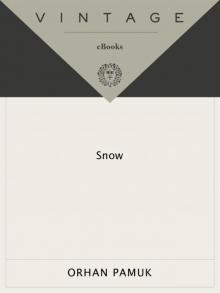 Snow
Snow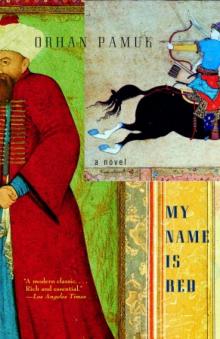 My Name is Red
My Name is Red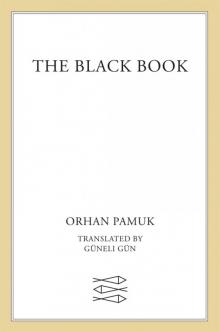 The Black Book
The Black Book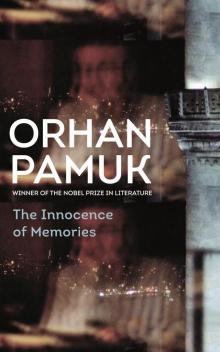 The Innocence of Memories
The Innocence of Memories The White Castle
The White Castle Other Colors
Other Colors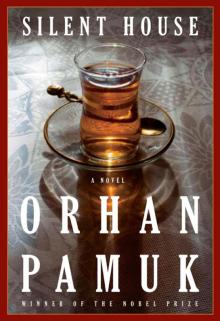 Silent House
Silent House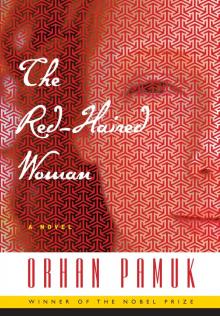 The Red-Haired Woman
The Red-Haired Woman The Museum of Innocence
The Museum of Innocence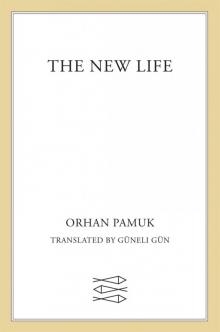 The New Life
The New Life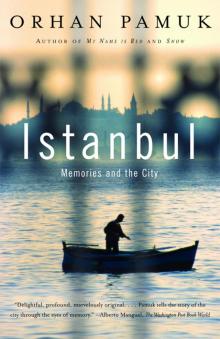 Istanbul
Istanbul